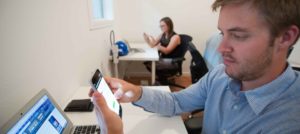Worldwide the number of people affected by and remaining disabled from stroke has increased significantly
Although ageing and population growth has been shown to be the main drivers of this increased, not all of the increased stroke burden can be accounted for by these demographic changes.
“The fast increasing stroke burden across all countries of the world suggests that our current primary stroke and cardiovascular disease (CVD) prevention strategies are simply not effective enough,” says AUT Professor Valery Feigin.
Feigin, Director of AUT’s National Institute for Stroke & Applied Neurosciences, and international collaborators recently published a paper in The BMJ examining the gaps in, and pros and cons of, current population-wide and high-risk prevention strategies.
Their findings suggest that for primary stroke prevention to be effective, the focus should be shifted from high-risk prevention to prevention at any level of CVD risk, with a specific focus on behavioural risk factors.
“A ‘motivational population-wide strategy ’could open a new page in primary prevention of not only stroke and CVD, but also other non-communicable disorders worldwide” says Feigin.
“Stroke is now no longer a disease of the elderly, with more than 60 per cent of all strokes occurring in people aged under 65 years. It is a worrying trend. More and more people are of workable age and the devastating effects of stroke on survivors will be long-lasting.”
When asked to elaborate on what the underlying causes of the increasing number of younger people suffering from stroke might be, Feigin felt the main reason was the increasing epidemic of diabetes and obesity. He also pointed to the rapid changes in developing countries meaning that more and more people were now exposed to an unhealthy lifestyle (poor diet, smoking etc).
With this in mind, researchers have suggested that motivating people to reduce their stroke risk using smartphone-enabled technologies could bridge the gaps in current approach to stroke prevention.
Evidence for the value of smartphone technologies for management and prevention of CVD and risk factors is accumulating with promising results. One such app is the Stroke Riskometer, a tool designed to empower people to know both their absolute and relative risks of having a stroke within the next 5– 10 years, thus motivating them to reduce their risk of stroke.
The app was voted by senior American doctors as the number 1 app in Medical Conditions among 100 000 + health-related apps worldwide in 2014, and since then has been downloaded >100 000 times from more than 100 countries.
It also endorsed not only by all major international organisations (World Stroke Organization, World Federation of Neurology, World Heart Federation and European Stroke Organisation) but also an increasing number of national stroke organisations, including China Stroke Association, Australian Stroke Foundation and the National Russian Organisation for the Fight Against Stroke.
Past studies have shown that 78 per cent of adults without current cardiovascular disease have two or more modifiable CVD risk factors such as blood pressure, cholesterol, glucose, body mass index, smoking, physical activity or diet, and therefore will have a noticeably increased relative risk of stroke shown in the app arguably sufficient to motivate them to reduce their risk.
In addition to these risk factors, the app includes additional risk factors such as alcohol intake, stress, family history of CVD and diabetes; therefore, the proportion of adults free from CVD disease who have two or more CVD risk factors included in the app is likely to be noticeably more than 78 per cent.
===============================================================
Example:
An 82 kg, 170 cm, man aged 25 years, with a poor diet (<6 servings of fruits/vegetables a day), not physically active enough and with systolic BP of 127mm Hg, the 5-year absolute risk of having a stroke is only 0.65 per cent, but a relative risk of having a stroke of 2.8 per cent. It is this increased risk that the team believe




